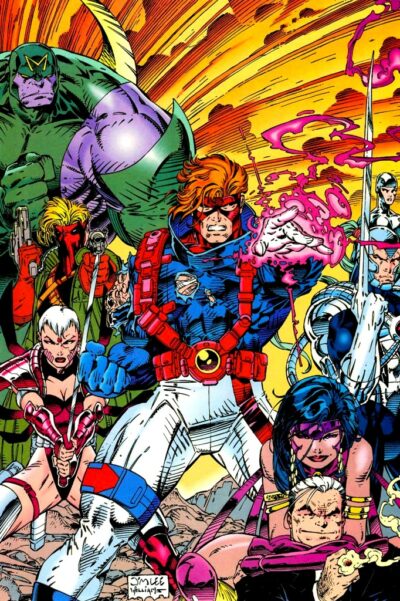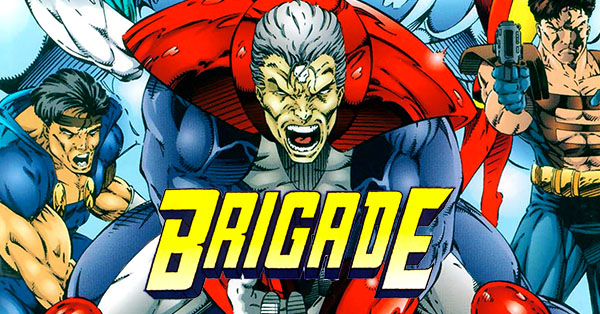To view this content, you must be a member of Crushing Krisis Patreon
Already a qualifying Patreon member? Refresh to access this content.
Comic Books, Drag Race, & Life in New Zealand
The definitive issue-by-issue comic book collecting guide and reading order for WildCATs in omnibus, hardcover, trade paperback, and digital comics. Find every issue and appearance! Part of Crushing Krisis’s Crushing Comics Guide to Collecting Indie & Licensed Comics. Last updated April 2023 with titles scheduled for release through August 2023.
![]()
In 1992 there was no hotter artist in comics than Jim Lee. That meant his Image Comics flagship title WildCATs launched to immediate and massive popularity – maybe even before Lee and his creations were ready for it.
Jim Lee pencilled his first issue of X-Men with writer Chris Claremont in May of 1989 with Uncanny X-Men (1963) #248. X-Men was already one of the most-popular comic books in America, but Lee’s gradually takeover as the primary artist from fellow Image founder Marc Silvestri elevated its popularity into the stratosphere. That popularity climax two years later in August 1991 when the launch of X-Men (1991) #1 became the highest-selling modern comic, selling millions of copies driven largely by Lee’s complete redesign of the cast as splayed across four covers.

Lee’s final work on X-Men arrived just a year later on X-Men (1991) #11 in August 1992 – the same month he launched WildC.A.T.s (1992) #1 at Image Comics with childhood friend Brandon Choi on scripting duties. In the interim, Lee’s character designs started pop up everywhere – from merchandise, to toys, to the revered X-Men: The Animated Series – which debuted in October 31, 1992. No other comic artist had more visibility for their work than Lee in the early 90s.
While WildCATs is often labeled as an off-brand X-Men, Lee’s concept for the series is closer to Marvel’s Inhumans and Eternals than their X-Men. The members of his team were all descendants of a pair of warring alien races who crashed to Earth millennia ago. The Kheribum seemed brave and majestic while the Daemonites in their truest form resembled Aliens or The Brood. The team payed out that ancient conflict in the modern day, making peace between Kheribum factions and hunting rogue Daemonites. (Over the course of the series, we learned that those first impressions weren’t the whole truth).
Lee had proven to be a fast penciller on X-Men, but he was now penciler, plotter, and co-founder of what was suddenly the most-popular comic company in America. The entire Image Comics line was hit by delays, including WildCATs. Lee was determined to pencil every issue of his pet creations, but filled in the gaps between his issues with a Special and a three-issue limited series penciled by Jae Lee. The book was always gorgeous, especially in a marquee crossover with Marc Silvestri’s Cyberforce. However, the plot and script never quite stood up to the majestic pencils. This is where the book slipped into X-Men comparisons, with familiar character archetypes that felt a lot like Cyclops, Jean, Wolverine, and more.
Lee lasted just two more issues on WildCATs than he did on his X-Men relaunch, bowing out of regular penciling duties with issue #13 in September 1994. Scripter Brandon Choi departed the title with Lee, turning it over first to James Robinson with Travis Charest through issue #20, and later to the grand wizard himself, Alan Moore in July 1995. While Robinson hewed close to Lee & Choi’s original concept, Moore exploded the cast and concept to focus on societal conflicts within both alien factions.
While Robinson and Moore were ultimately good for the growing lore of the team, that meant that the “classic” WildCATs line-up only had a year of surface-level stories for fans to enjoy. Meanwhile, that initial cast (along with Lee’s designs) were featured in an animated series that launched in 1994 with an accompanying toy line. As the comic grew increasingly intellectual and far less toyetic through the 90s and into the early 2000s, many fans still had an expectation that it would “play the hits” of its first two years of issues (when really there weren’t many “hits” in that run).
WildCats has been revived several times over after Lee sold his WildStorm creations to DC Comics in 1998 and joined the company as an executive. However, Stormwatch’s transformation into the mega-popular The Authority took the spotlight off of WildCats as the marquee team of the WildStorm universe. It was Stormwatch and Authority that continued to generate higher-selling series with more spinoffs. Meanwhile, a fourth WildCATs volume meant to be scripted by Grant Morrison and pencilled by Lee fizzled after just one issue in 2006.
In 2008 Christos Gage relaunched WildCATs (alongside an Authority relaunch) with an all-inclusive, fan-pleasing cast alongside an equally-massive, world-ending plot. In a way, this volume felt the closest to Lee, Choi, and Robinson’s original 20 issues, even though it took advantage of the swell of characters and concepts that had been introduced in the intervening 15 years.
Unfortunately, the run was cut off by DC’s Flashpoint. While individual team members like Grifter and Voodoo graduated into New 52 with their own ongoing titles, New 52 never once brought together the full team, with Warren Ellis launching a completely separate universe of The Wild Storm to reimagine the core of the team.
After a full decade of clamoring from fans, finally DC began to introduce WildStorm characters into their main continuity – including the emergence of Grifter in Gotham City under the pens of James Tynion and Matthew Rosenberg. After much teasing, that lead to WildCats relaunch at the end of 2022. Shortly after, DC announced plans for The Authority to be one of the anchors of their new cinematic universe. After years on the margins of DC Comics, 2023 finally found Jim Lee’s WildCats and Stormwatch back in the spotlight in the DC Universe.
[Read more…] about WildCATs – Definitive Collecting Guide & Reading Order
by krisis
I have another new guide for all Patrons of CK and, weirdly, this guide for a little known Image Launch title with few lasting fans is a big inspiration for expanding my indie comics coverage. Welcome to a guide about the Image Comics launch book from Rob Liefeld you’ve probably never heard of in my Guide to Brigade!

If you recall Brigade from the 90s, you’d have to have been a major fan of the mythology of Rob Liefeld’s Youngblood. And, if the amount of information on the internet about this comic is any indication, there ain’t a whole lot of those major fans out there.
Brigade was the fifth comic launched by Image in 1992, and the second from Liefeld’s Extreme Studios. His Youngblood were positioned as a government-sanctioned super-team that doubled as major media stars. Brigade was the dark flipside of that. Its leader, Bloodstone, was a World War 2 veteran who served, died, and served again thanks to the Image Comics version of a super soldier serum. He once led Youngblood, but left in disgrace after the accidental death of one of his team members at his own hands.
Despite it all, Battlestone never gave up on fighting the good fight for justice – he just fights it from a different angle now with his own vigilante team.
I made that sound really cool, right? Like a disgraced Captain America leading the Dark Avengers a full five years prior to the debut of Thunderbolts (rather than fancy boy Iron Man leading a bunch of high-profile Avengers slumming it in Force Works, which was still two years after the launch of Brigade).
So, why don’t we recall this comic as the flipside of Youngblood the way we do with the conjoined pair of WildCats & Stormwatch? [Read more…] about New for Patrons: Guide to Brigade